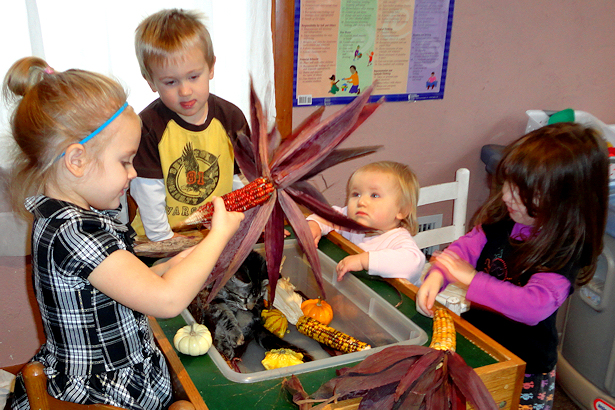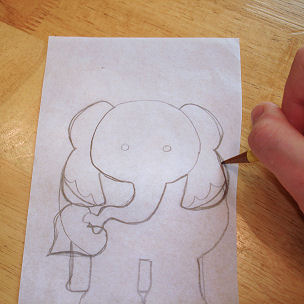 Children are naturally active learners. They’re curious, and like to investigate and experiment. Parents and caregivers have opportunities every day to enrich children’s learning in simple ways.
Children are naturally active learners. They’re curious, and like to investigate and experiment. Parents and caregivers have opportunities every day to enrich children’s learning in simple ways.
The most important thing we can do to encourage learning is to remember that everything a child does contributes to his or her learning. When Joey throws his food on the floor for the millionth time he learns that gravity always pulls things down. He may also learn that throwing food on the floor means his dinner is over! When Sally uses scissors to fringe the edges of paper she’s learning about cause and effect, as well as developing the small muscle skills she’ll need later for writing.
Children learn best from hands-on experiences with materials they can see, hear, touch, smell, and possibly even taste. Worksheets, flashcards, and the like don’t offer the type of interaction that children need to learn. Circling pictures of bigger or smaller items on a sheet of paper can’t compare to the opportunity to learn about different sized objects by holding them in your hands.
Some way you can support your child’s learning are:
- Encourage imagination by offering many opportunities for to create freely. Sand and water, play dough, dress-up clothes and other open-ended materials occupy children for long periods of time and encourage them to use their imaginations.
- Develop thinking skills by asking lots of questions. Gather several unrelated objects like a cotton ball, toothbrush, and crayon, then ask your child “What are these used for?” and let her explain without correcting or guiding. Trace common items on a piece of paper and challenge your child to match the item with the tracing; this strengthens visual perception and thinking skills.
- Provide hands-on activities in everyday situations. While baking homemade pizza, talk about the shape of the pizza crust: is it round, rectangular, or some unusual shape? What other objects can you find that are the same shape? What does the sauce look, smell, taste and feel like? Should you use a lot of sauce or just a little? Your child can develop vocabulary, practice math skills, and much more through simple cooking activities.
- Promote language by talking, talking, talking. Describe what you’re doing, ask questions: “What do think will happen if…?” and “Why do you think __________ happened?” Another great language activity is writing an email or letter to another family member. Young children can dictate while you type or write, while older children can try their skills at the keyboard or with a pencil.
Remember, children are always learning!









Active learning is a process whereby students engage in activities, such as reading, writing, discussion, or problem solving that promote analysis, synthesis, and evaluation of class content. Cooperative learning, problem-based learning, and the use of case methods and simulations are some approaches that promote active learning. This section provides links to bibliographies, research summaries, articles, and other resources about active learning.